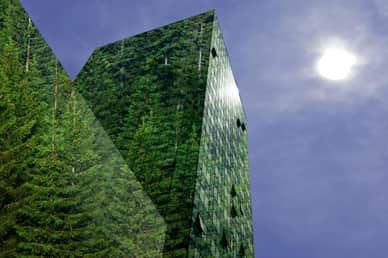Tackling Climate Change Through LEED Certification
Published on January 28, 2019 by Nick Walsh
 The science community understands that the Earth is warming. Climate change is affecting sea-levels and causing more extreme weather. According to USA Today, the USA had 3 costliest natural disasters in 2018- California fire in November alone cost an estimated $16.5 billion. The shifting climate changes the way leaders and architects think about the built environment. There are international commitments such as the Paris Agreement and the Global Covenant of Mayors that brought leaders together to act on sustainability. Leaders in U.S. states and city levels are also planning for climate impact reduction and long-term resilience. Buildings represent 41% of the total U.S. energy output and there are opportunities to improve structures and reduce carbon emissions through Leadership in Energy and Environmental Design (LEED). LEED uses specific credit-based strategies and strict standards to guide the building process in adding as little as possible to greenhouse gas emissions, water, and energy use. Of the 100 total points in LEED v4, it considers 35 reward climate change mitigation strategies including credits in:
The science community understands that the Earth is warming. Climate change is affecting sea-levels and causing more extreme weather. According to USA Today, the USA had 3 costliest natural disasters in 2018- California fire in November alone cost an estimated $16.5 billion. The shifting climate changes the way leaders and architects think about the built environment. There are international commitments such as the Paris Agreement and the Global Covenant of Mayors that brought leaders together to act on sustainability. Leaders in U.S. states and city levels are also planning for climate impact reduction and long-term resilience. Buildings represent 41% of the total U.S. energy output and there are opportunities to improve structures and reduce carbon emissions through Leadership in Energy and Environmental Design (LEED). LEED uses specific credit-based strategies and strict standards to guide the building process in adding as little as possible to greenhouse gas emissions, water, and energy use. Of the 100 total points in LEED v4, it considers 35 reward climate change mitigation strategies including credits in:- Greenhouse gas emission reduction
- Sustainable site location
- Access to public transportation
- Water use
- Energy performance
- Carbon offsets
- Life cycle reductions
Resources
Online AIA & State Approved Courses for Sustainable Architecture
Weatherization and Energy Efficient Building Course | #AIABLTI306
Weatherization and Renewable Energy Course | #AIABLTI303
Technological Innovations: Building Green Into the Budget | #AIABLTI205
More Articles On Sustainable Architecture
Future Green Architecture Projects
Harvard Programs And Snøhetta Design HouseZero For Sustainable Architecture
AIA President Issues Call to Action Letter On Climate Change
